
Yosemite National Park
 |
Grand Canyon of the Tuolumne Yosemite National Park |
August 20, 2010 — Day 3
After another big breakfast just like the other one, it is time to leave.
My sweetie is awaiting a phone call because I have been incommunicado for two full
days. I will need to drive more than two hours before my lousy
T-Mobile coverage kicks in down at Chinese Camp.
Bidding adieu to my new acquaintances, I set out on the 6-mile
homeward march. Thus far I have been highly pleased with my new
backpack purchased just for this trip; let us see how it handles an uphill
trek.
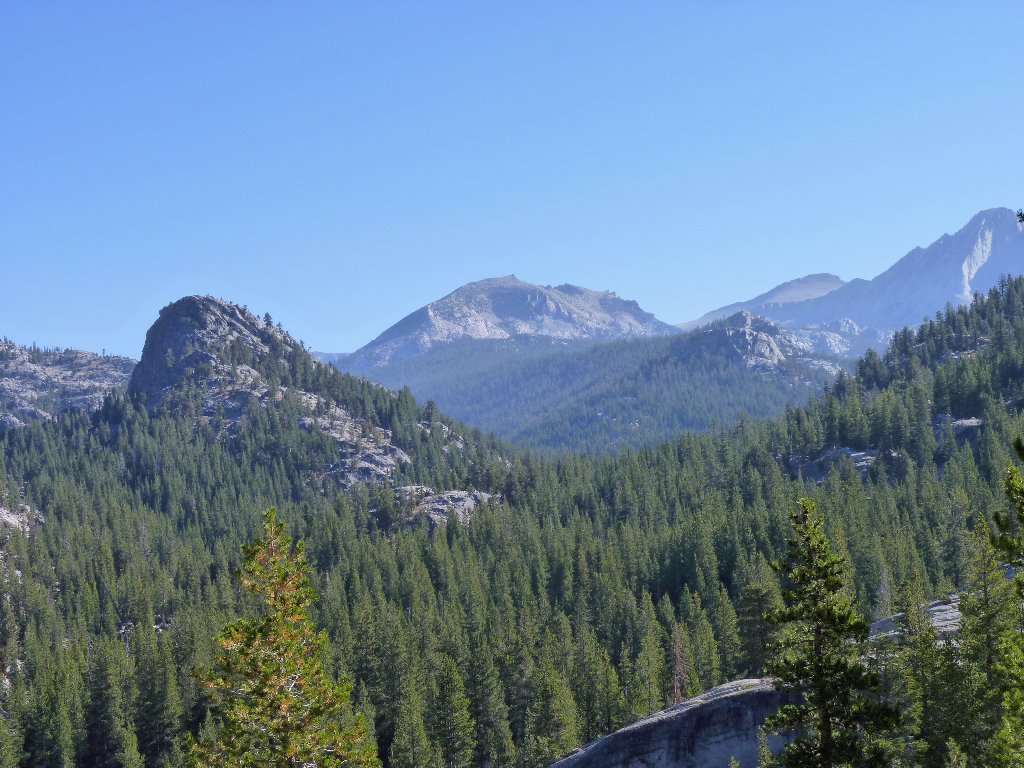
North Peak, 12247', and Mount Conness on the far right, 12589'

The cobblestone climbs are back, and I am enjoying them
I wander over to get a closer view of Little Devils Postpile, named after its
world-famous counterpart to the south. Located just across the river,
it is a lava flow that has hardened and cracked into thousands of basalt columns.
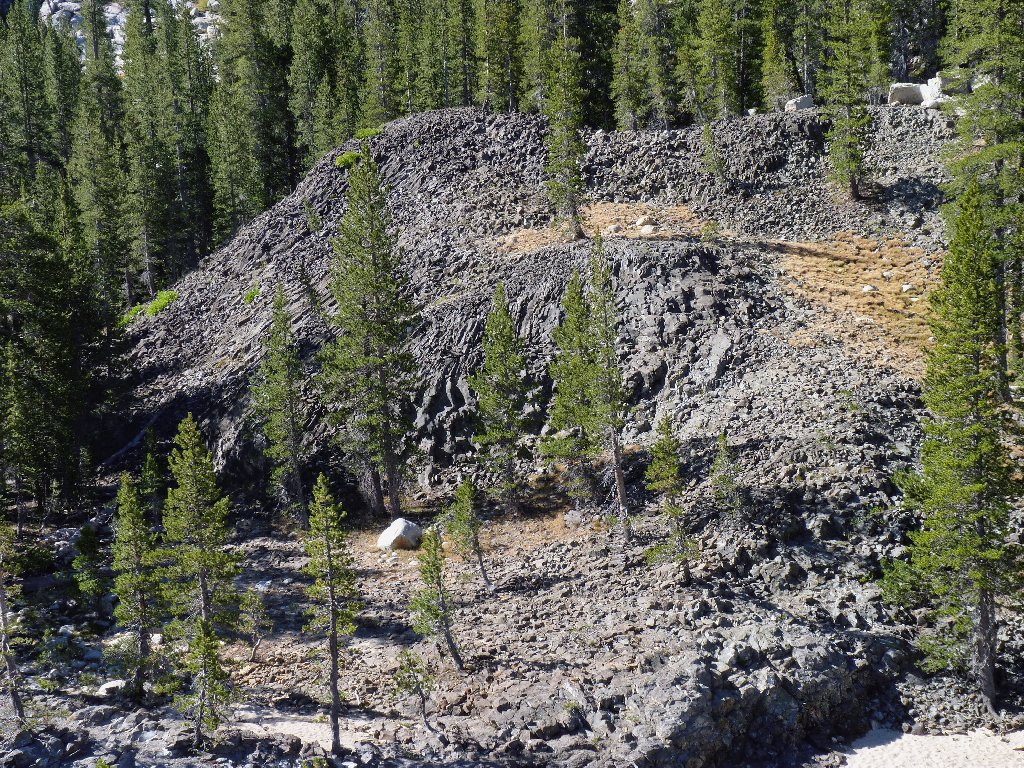
Little Devils Postpile is 9.4 million years old
Also across the river is a tilted slab of water-polished granite,
which poses a significant danger to hikers over there in the early season.
Although the rock is easily negotiable at this time, when the water is high a
misstep on that slippery slope could be fatal.
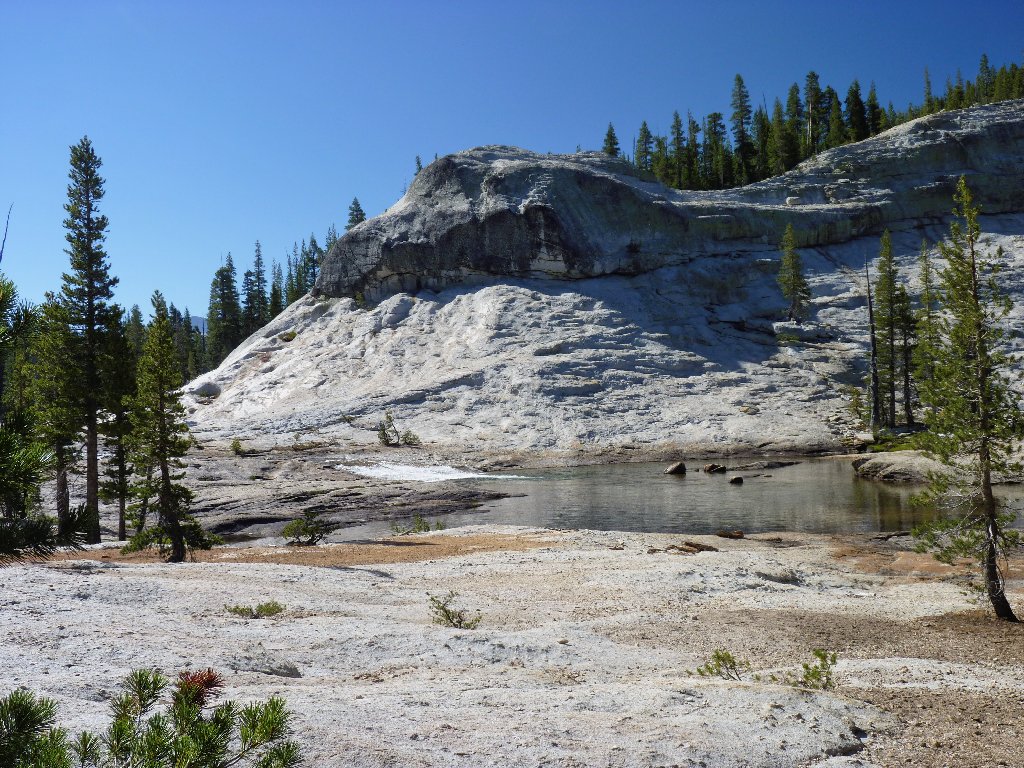
Avoid that slab in the springtime
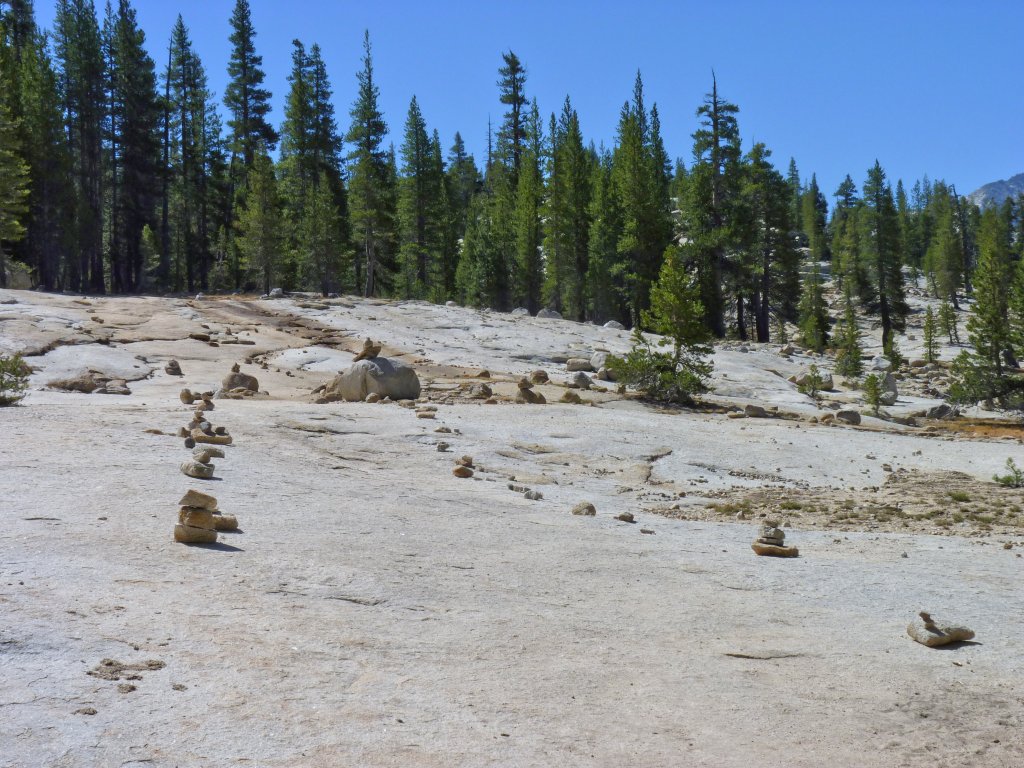
Cairn Corridor
The wonderful Cathedral Range comes into view again at the edge of the meadow. So much remains to be done up there; yet I have not made it into those mountains this season, and I am not pleased about that.

Tuolumne Meadows and the Cathedral Range
A lone deer is grazing in the meadow, unconcerned about me. Nearby a new variety of butterfly is posing for photographs, so I divert my attention there.
I find a different way across the creek this time, which necessitates a balancing act that is much more fun than the previous route.
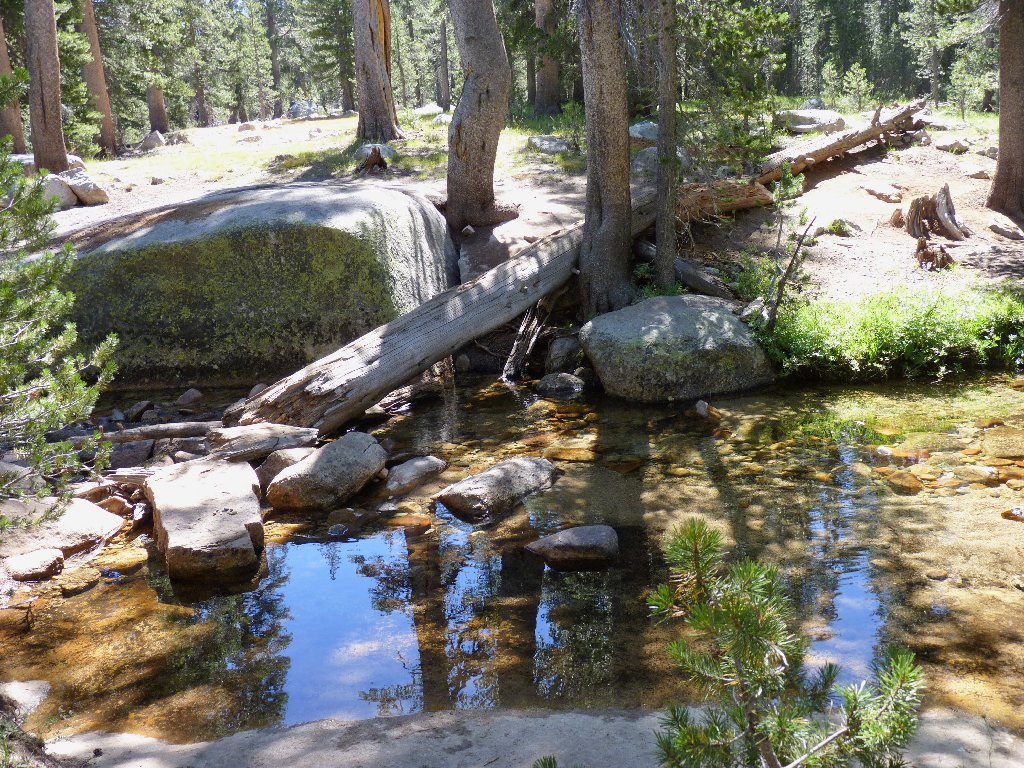
Crossing Delaney Creek

Alpine Lily
Near the trailhead is Parsons Memorial Lodge, built by the Sierra Club in 1914 and named after former Director Edward Taylor Parsons. Being one of the first stone buildings erected in a national park, its original roof structure still supports modern snow loads. Now the center hosts daily lectures and shows, and one gets to walk half a mile to see them.
Parsons Lodge is on the National Register of Historic Places

My Osprey Stratos-40 pack has proved ultra-comfortable
A nearby plaque commemorates an historic meeting which helped lead to the establishment of this park:
I never miss an opportunity to photograph John Muir's favorite mountain, Cathedral Peak. Soda Springs proves to be little more than a bubbling hole surrounded by a protective log structure. Just beyond that is the end of the trail.
Although my long-ailing tendon was ready to quit two miles ago, my recently injured ankle registered no complaint whatever. Go figure.
The Soda Springs water is not recommended for drinking
§: What more need be said? This has been the most profoundly
rewarding outing of my hiking career. Although the original objective had
been primarily to visit Waterwheel Falls, it was the total package that made my
trip so memorable.
Be forewarned, however. Should you visit the canyon in the early season in order to see the splendiferous waterwheels, then you might well experience this region at its most sublime; but you would miss out on much of the underlying beauty of this remarkable place. And you would have to deal with mosquitoes.
I recommend planning a trip for August or even early September.
For best results, make the effort to visit some of the cascades
up-close-and-personally.
| Scenery |  |
| Difficulty |  |
| Personality |  |
| Flowers |  |
| Solitude |  |